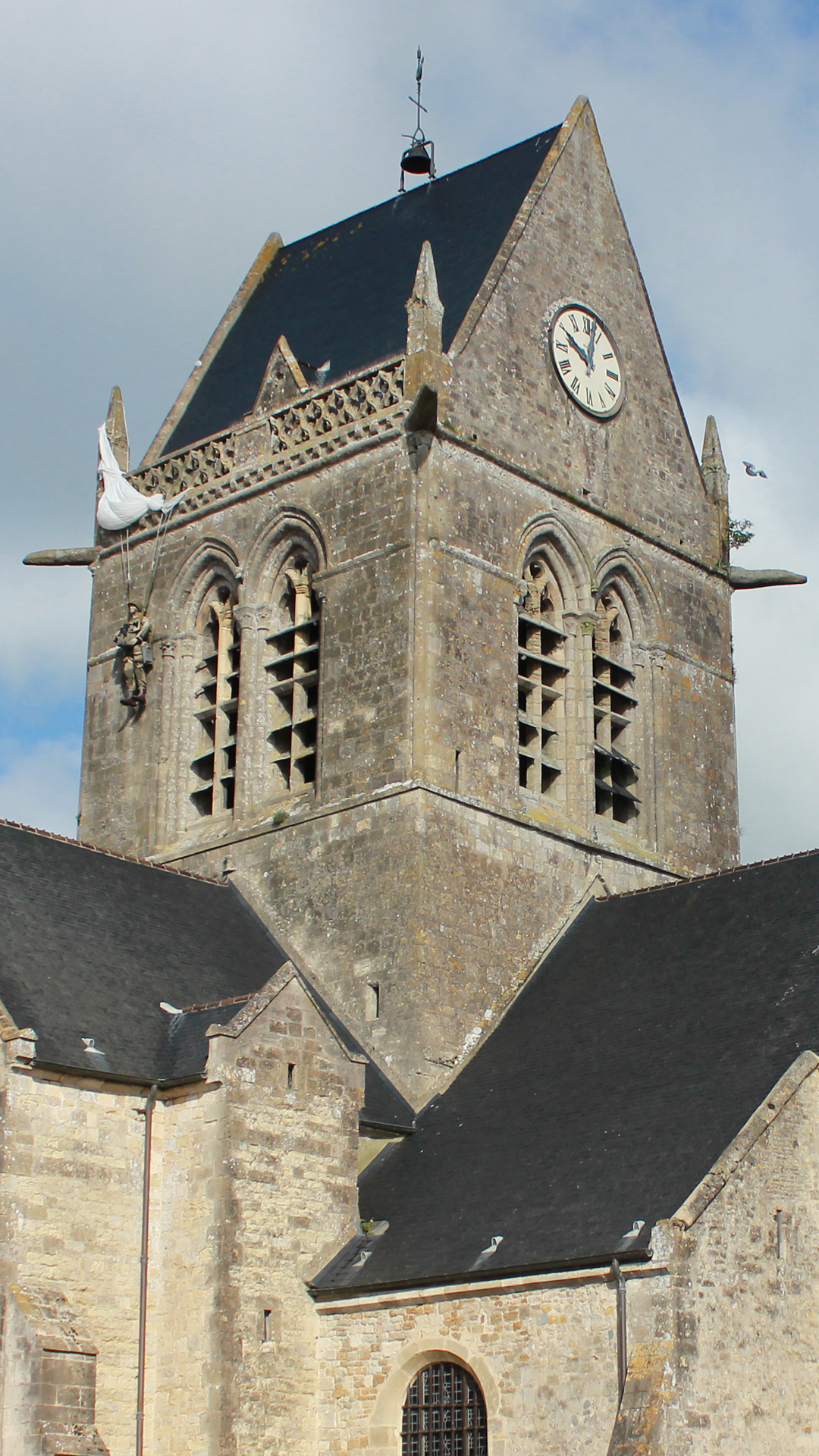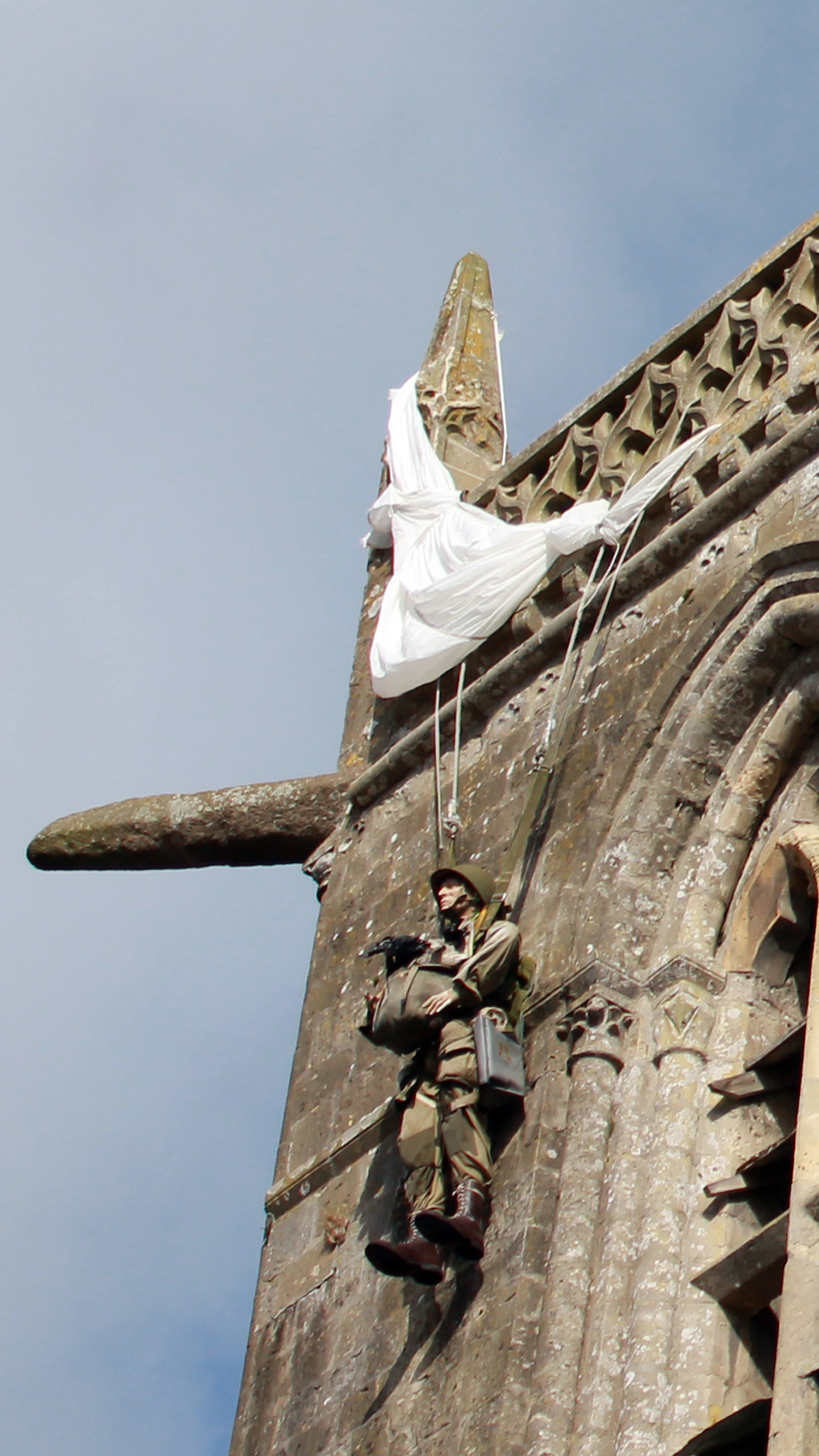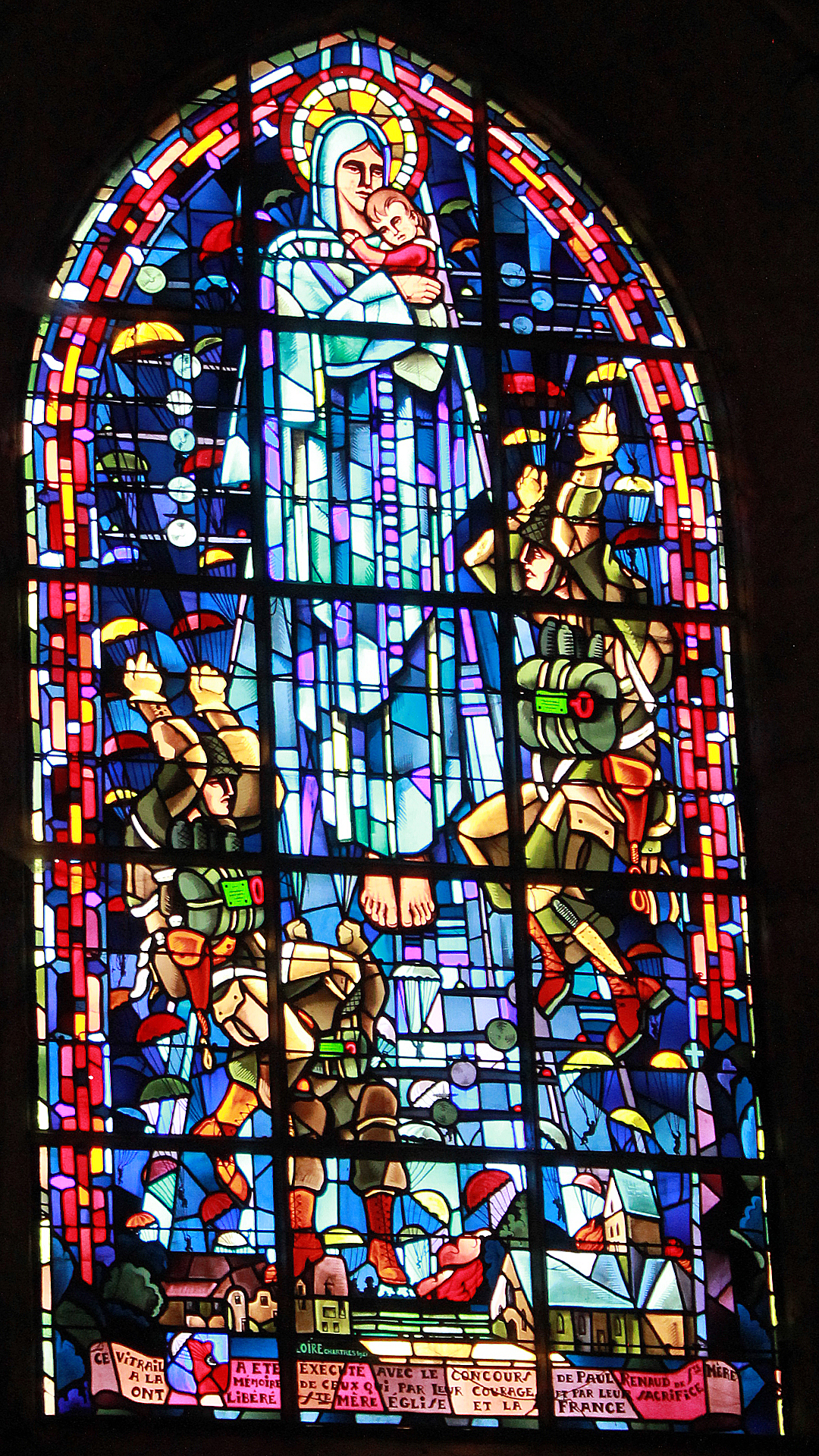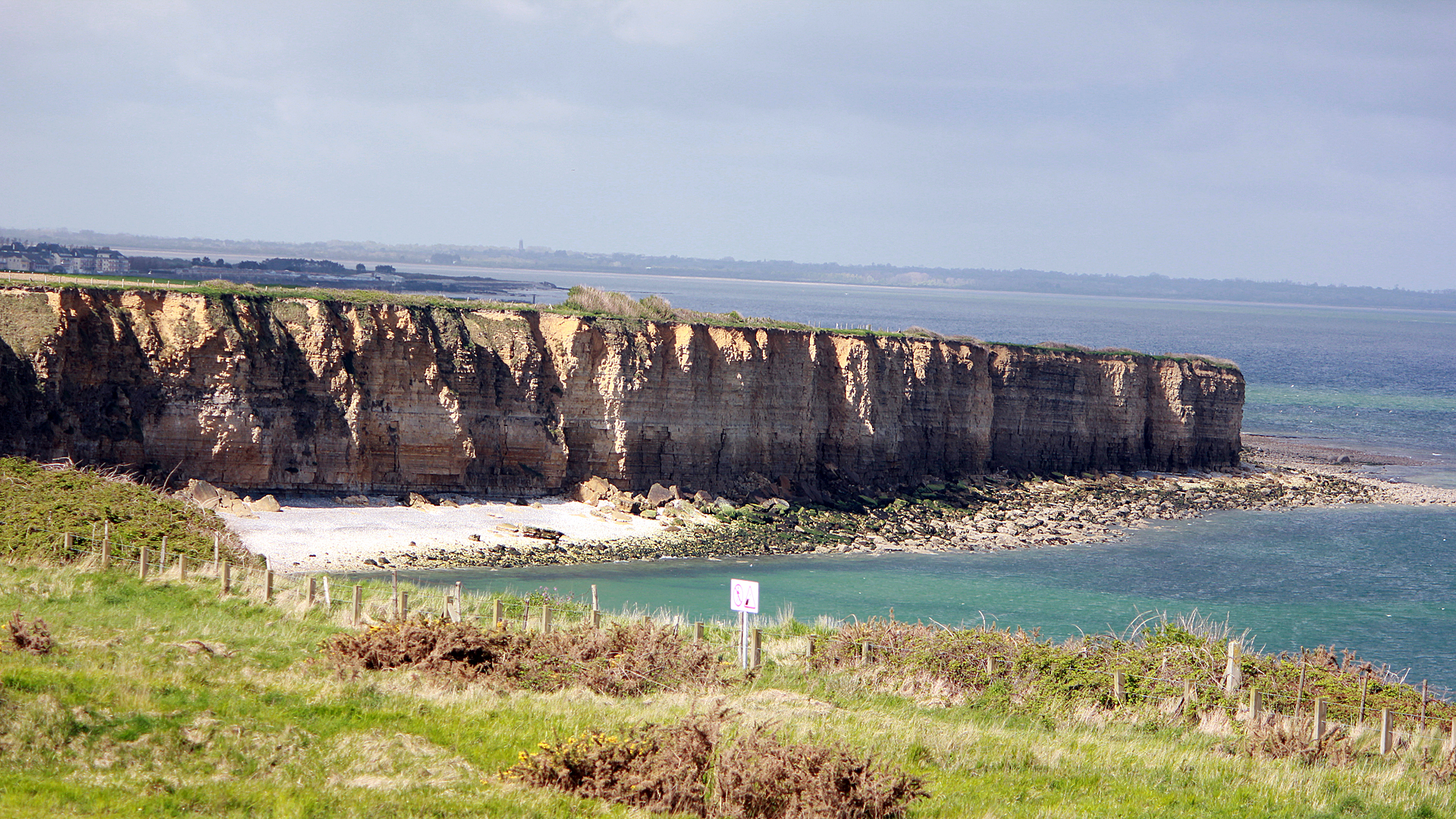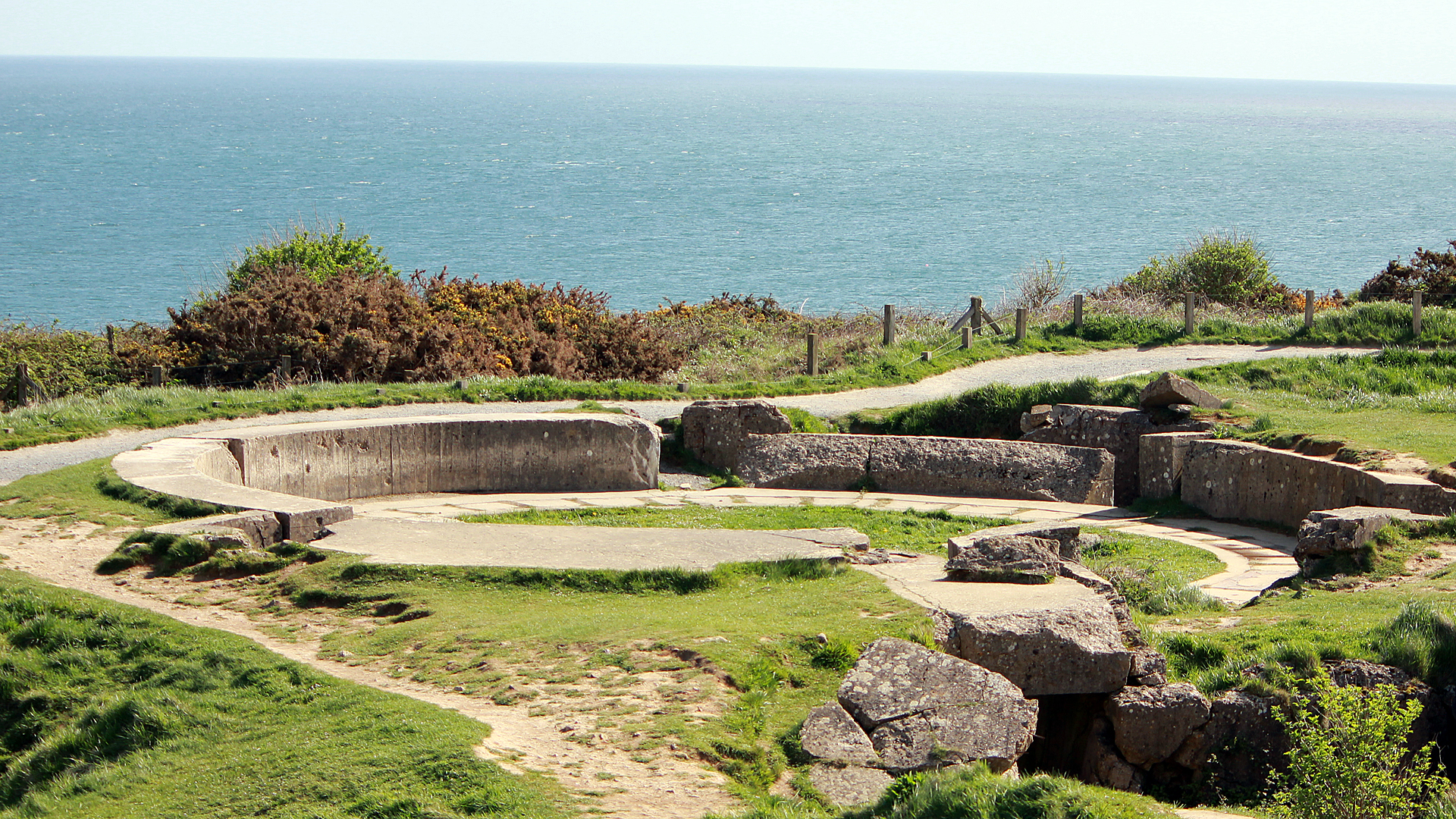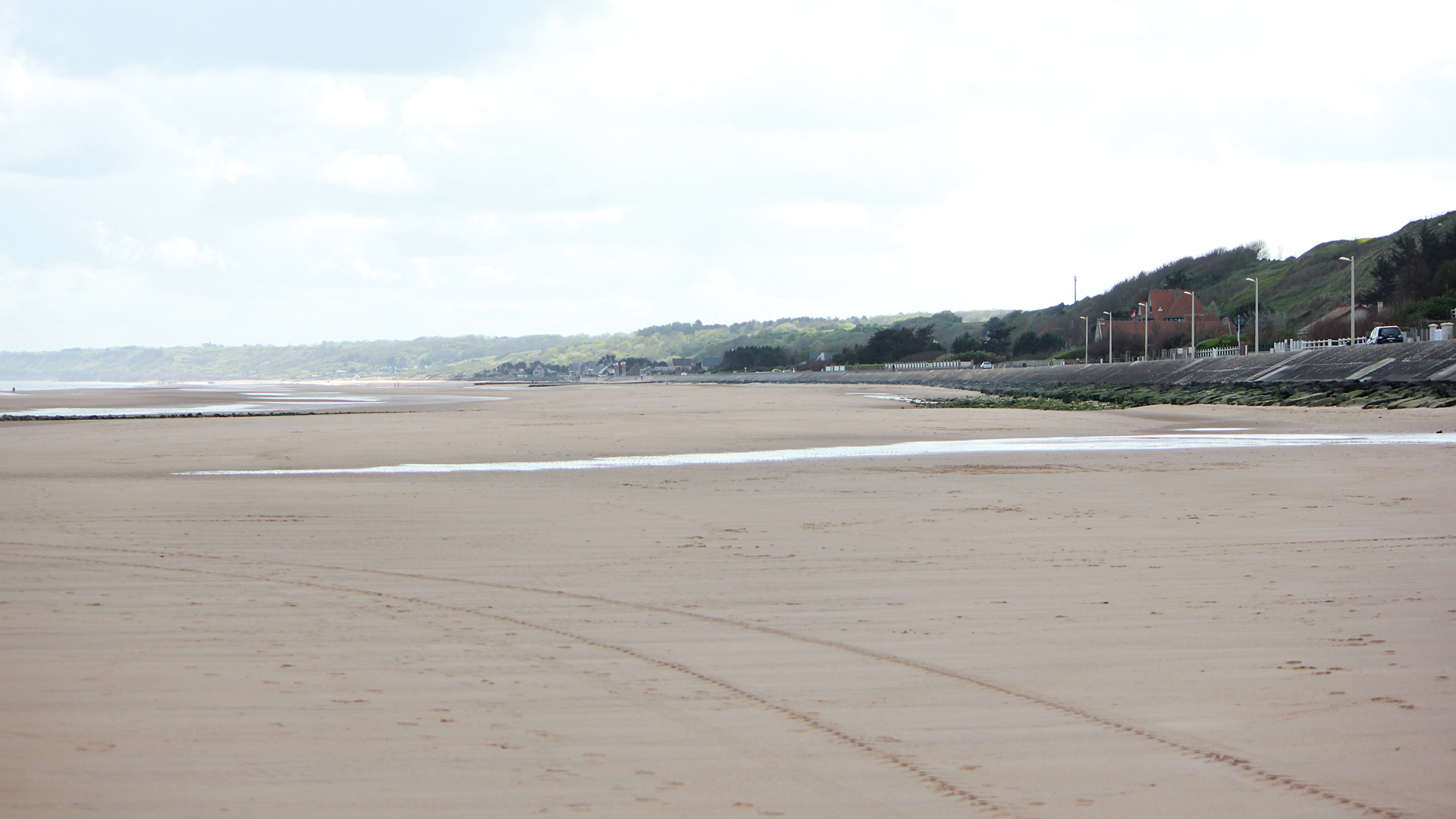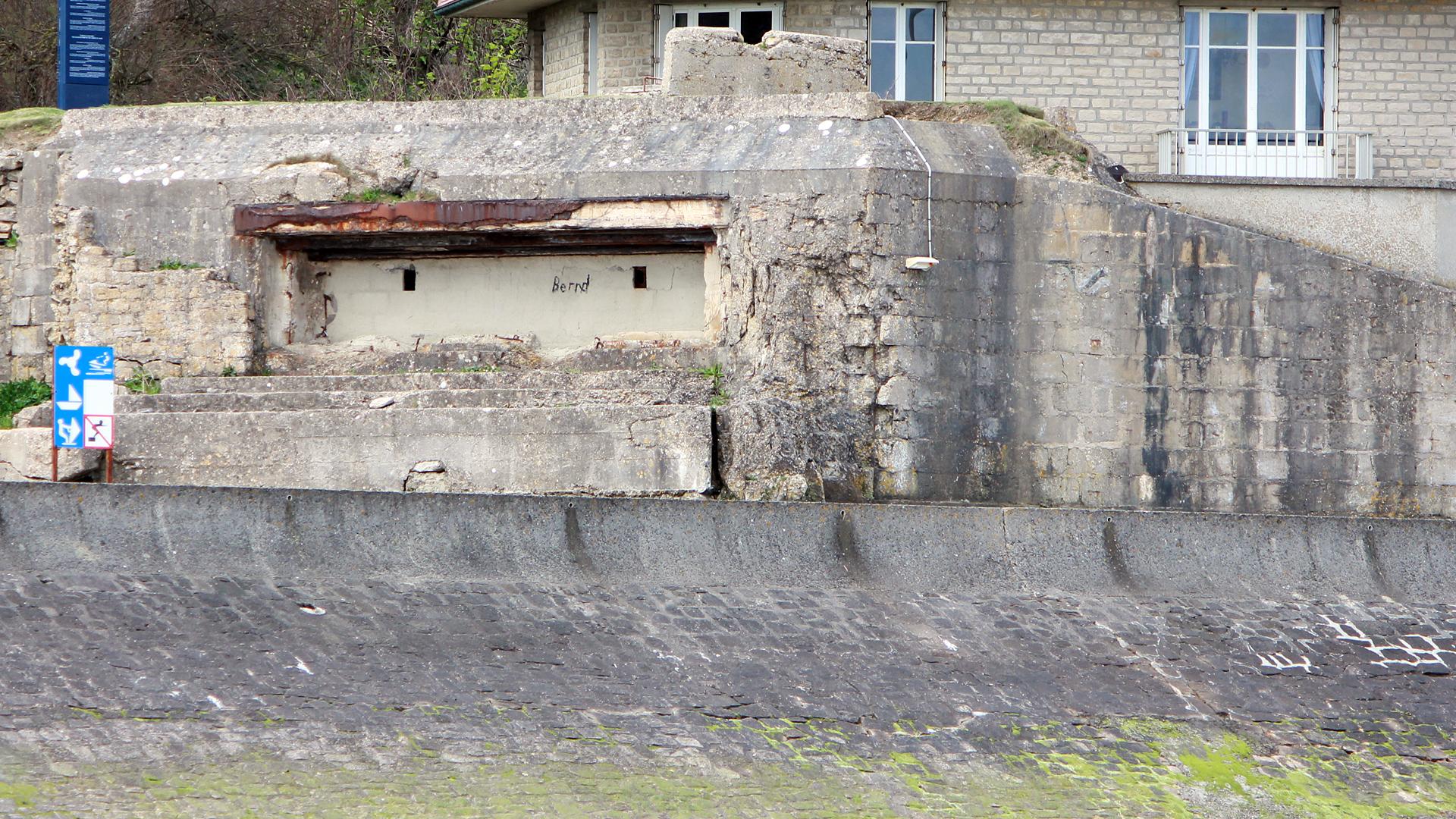
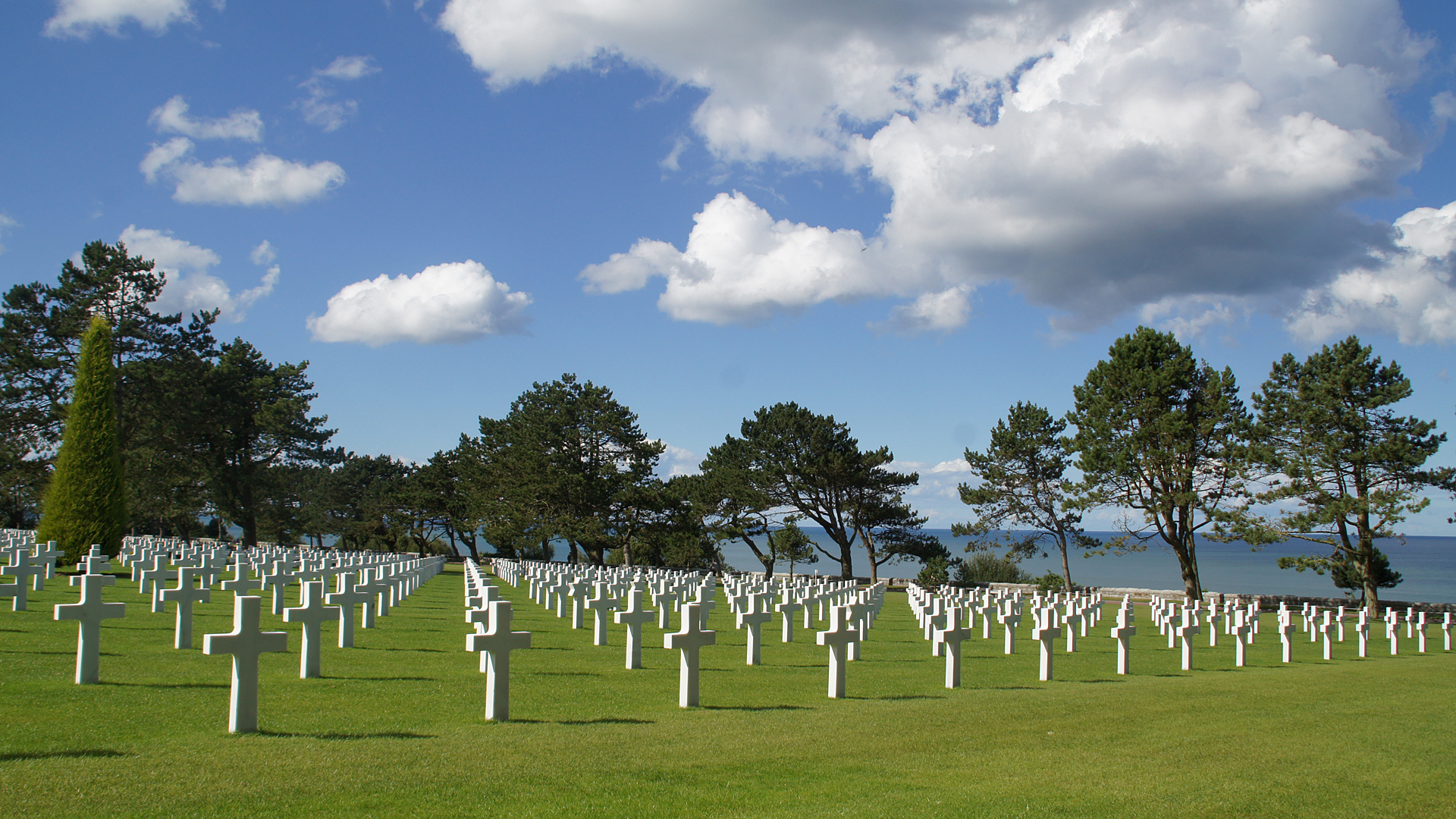


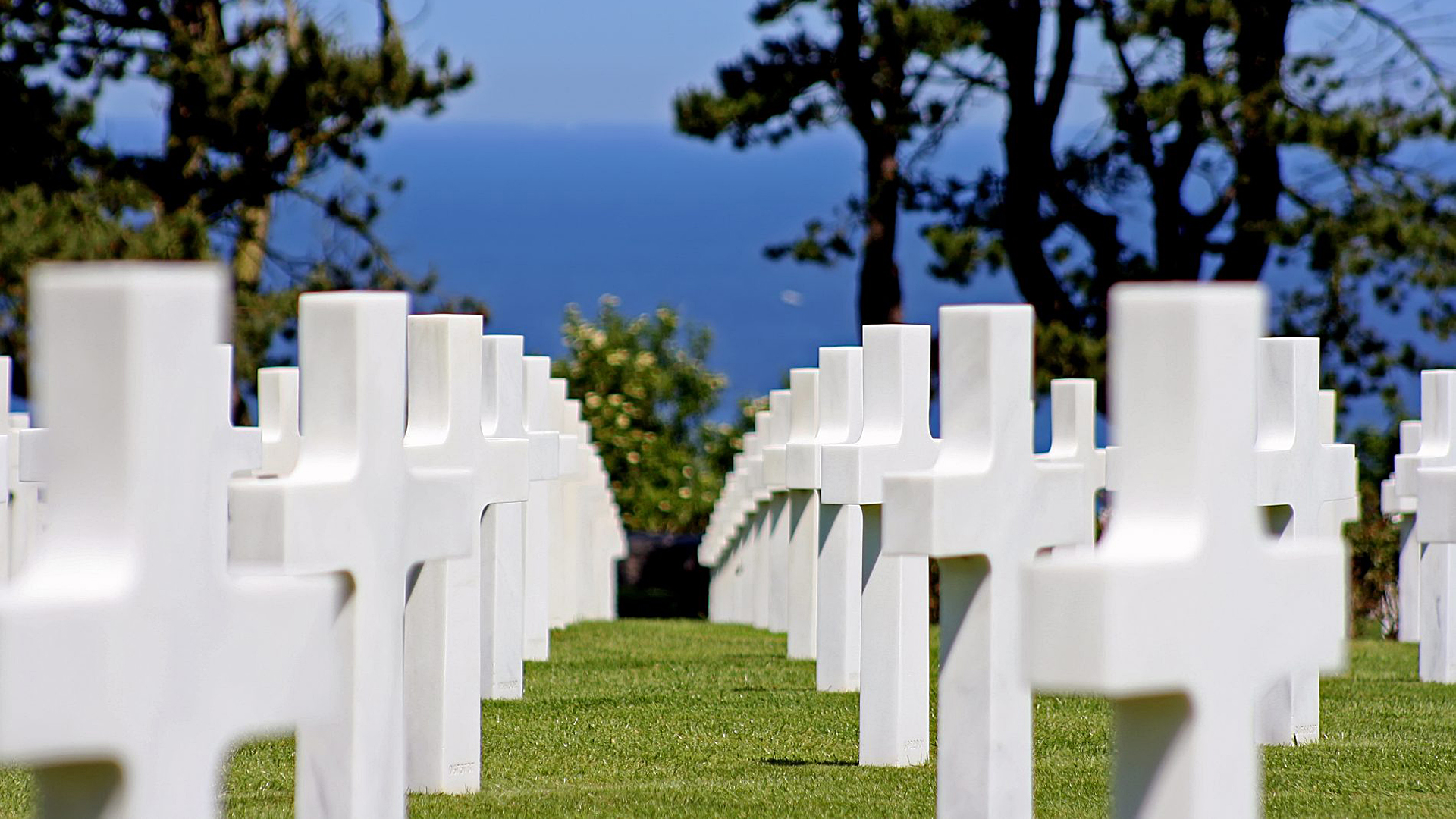
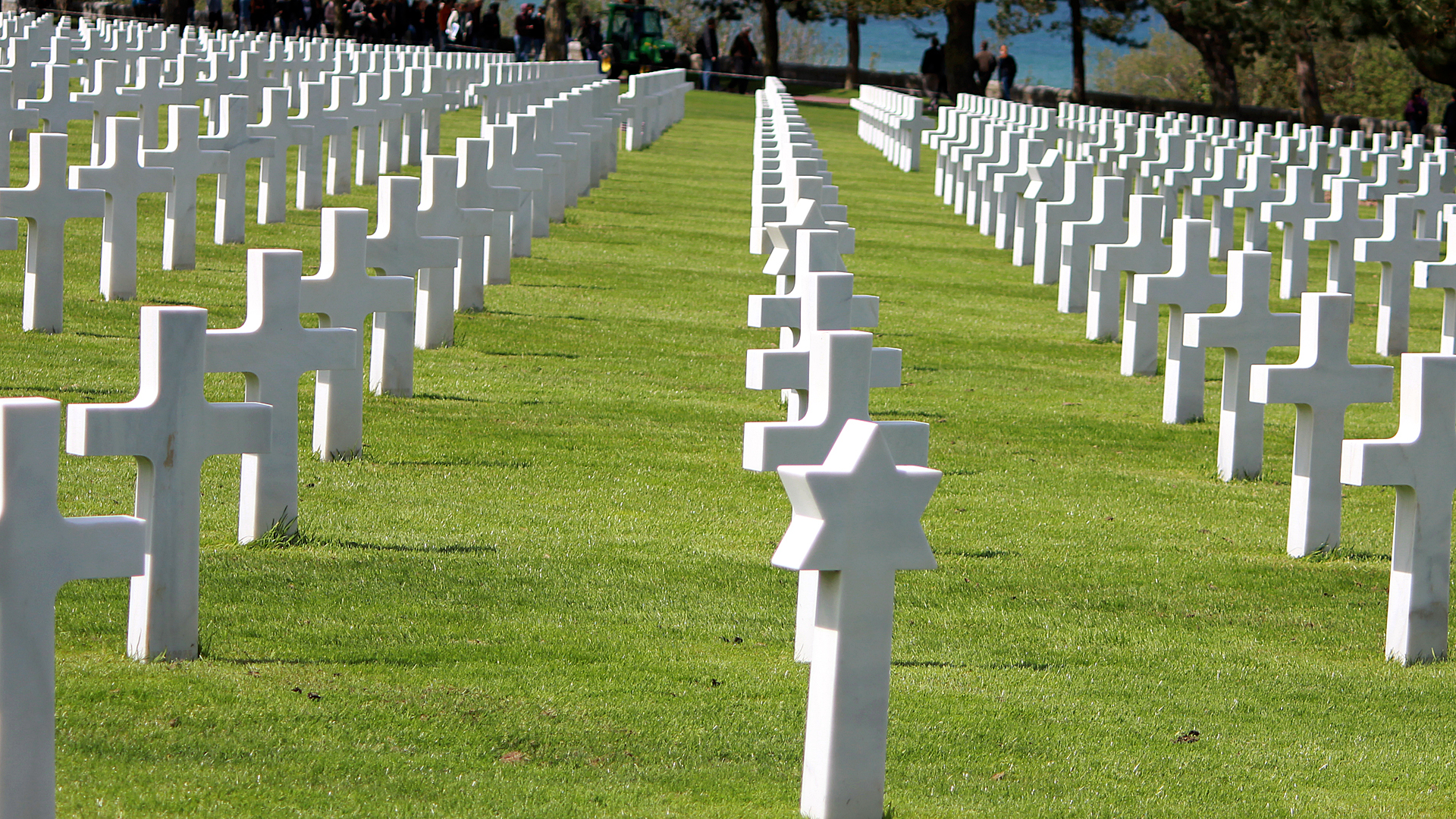
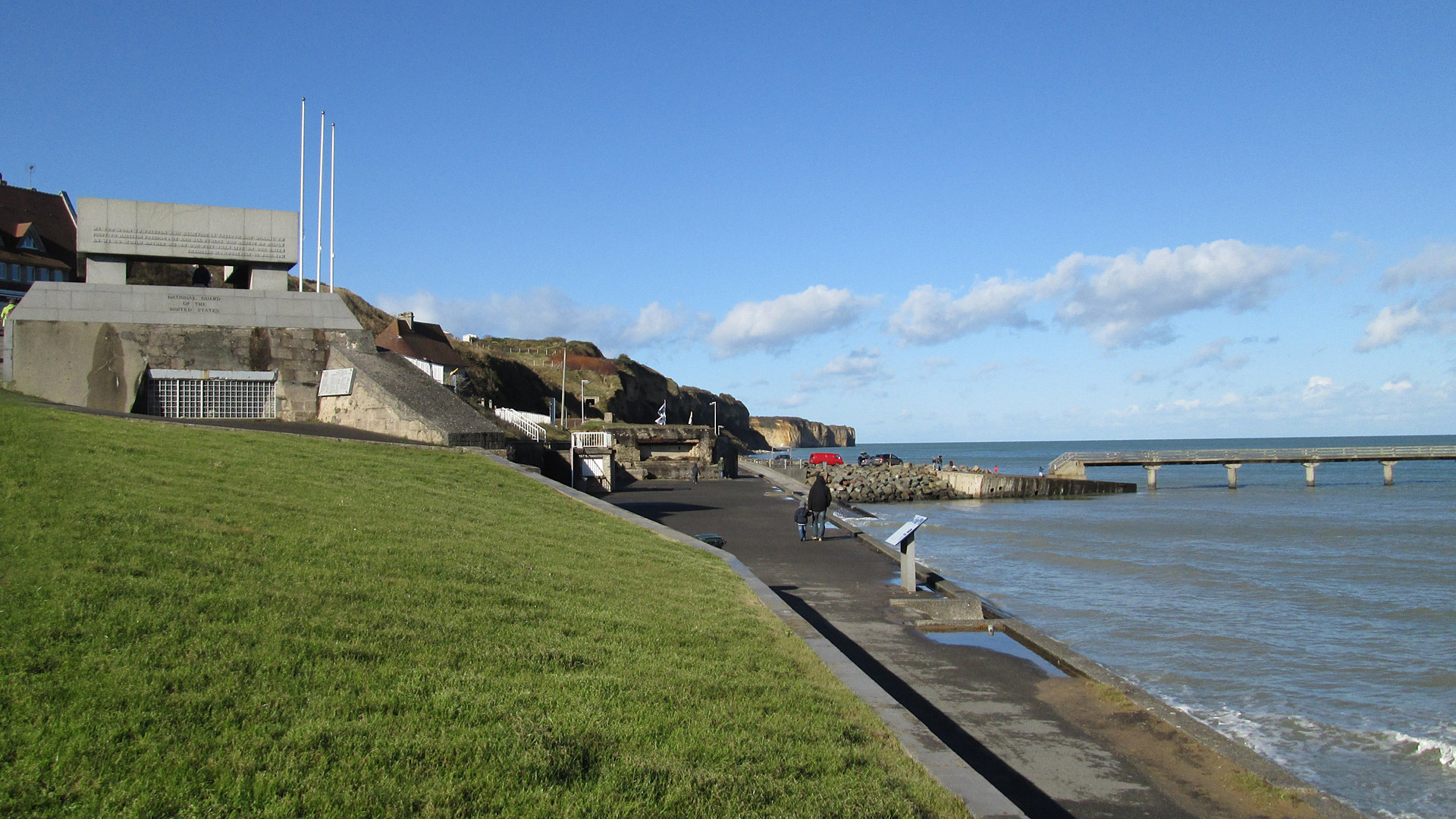 On June 6, 1944, the Western Allies of World War II launched the largest amphibious invasion in history when they assaulted Normandy, located on the northern coast of France. The invaders were able to establish a beachhead as part of Operation Overlord after a successful "D-Day," the first day of the invasion.
On June 6, 1944, the Western Allies of World War II launched the largest amphibious invasion in history when they assaulted Normandy, located on the northern coast of France. The invaders were able to establish a beachhead as part of Operation Overlord after a successful "D-Day," the first day of the invasion.Allied land forces came from the United States, Britain, Canada, and Free French forces. In the weeks following the invasion, Polish forces and contingents from Belgium, Czechoslovakia, Greece and the Netherlands participated in the ground campaign; most also provided air and naval support alongside elements of the Royal Australian Air Force, the Royal New Zealand Air Force, and the Royal Norwegian Navy.
The Normandy invasion began with overnight parachute and glider landings, massive air attacks and naval bombardments. In the early morning, amphibious landings commenced on five beaches codenamed Sword, Juno, Gold, Omaha and Utah, with troops from the United States landing on Omaha and Utah, Great Britain landing on Gold and Sword and Canada landing on Juno. During the evening the remaining elements of the airborne divisions landed. Land forces used on D-Day sailed from bases along the south coast of England, the most important of these being Portsmouth.
On June 8, 1944, the U.S. First Army established the temporary cemetery, the first American cemetery on European soil in World War II. After the war, the present-day cemetery was established a short distance to the east of the original site.
Like all other overseas American cemeteries in France for World War I and II, France has granted the United States a special, perpetual concession to the land occupied by the cemetery, free of any charge or any tax. This cemetery is managed by the American Battle Monuments Commission, a small independent agency of the U.S. federal government, under Congressional acts that provide yearly financial support for maintaining them, with most military and civil personnel employed abroad. The U.S. flag flies over these granted soils.
The cemetery is located on a bluff overlooking Omaha Beach (one of the landing beaches of the Normandy Invasion) and the English Channel. It covers 172 acres, and contains the remains of 9,387 American military dead, most of whom were killed during the invasion of Normandy and ensuing military operations in World War II. Included are graves of Army Air Corps crews shot down over France as early as 1942 and three American women.
Only some of the soldiers who died overseas are buried in the overseas American military cemeteries. When it came time for a permanent burial, the next of kin eligible to make decisions were asked if they wanted their loved ones repatriated for permanent burial in the U.S., or interred at the closest overseas cemetery.
The names of 1,557 Americans who lost their lives in the Normandy campaign but could not be located and/or identified are inscribed on the walls of a semicircular garden at the east side of the memorial. This part consists of a semicircular colonnade with a loggia at each end containing maps and narratives of the military operations. At the center is a 22-foot bronze statue entitled The Spirit of American Youth Rising from the Waves by Donald De Lue, and an overhead mural by Leon Kroll. Facing west at the memorial, one sees in the foreground the reflecting pool, the mall with burial areas to either side and the circular chapel beyond. Behind the chapel are allegorical figures representing the United States and France. An orientation table overlooks the beach and depicts the landings at Normandy.
The Memorial faces the United States at its nearest point to the cemetery; a point between Eastport and Lubec, Maine.
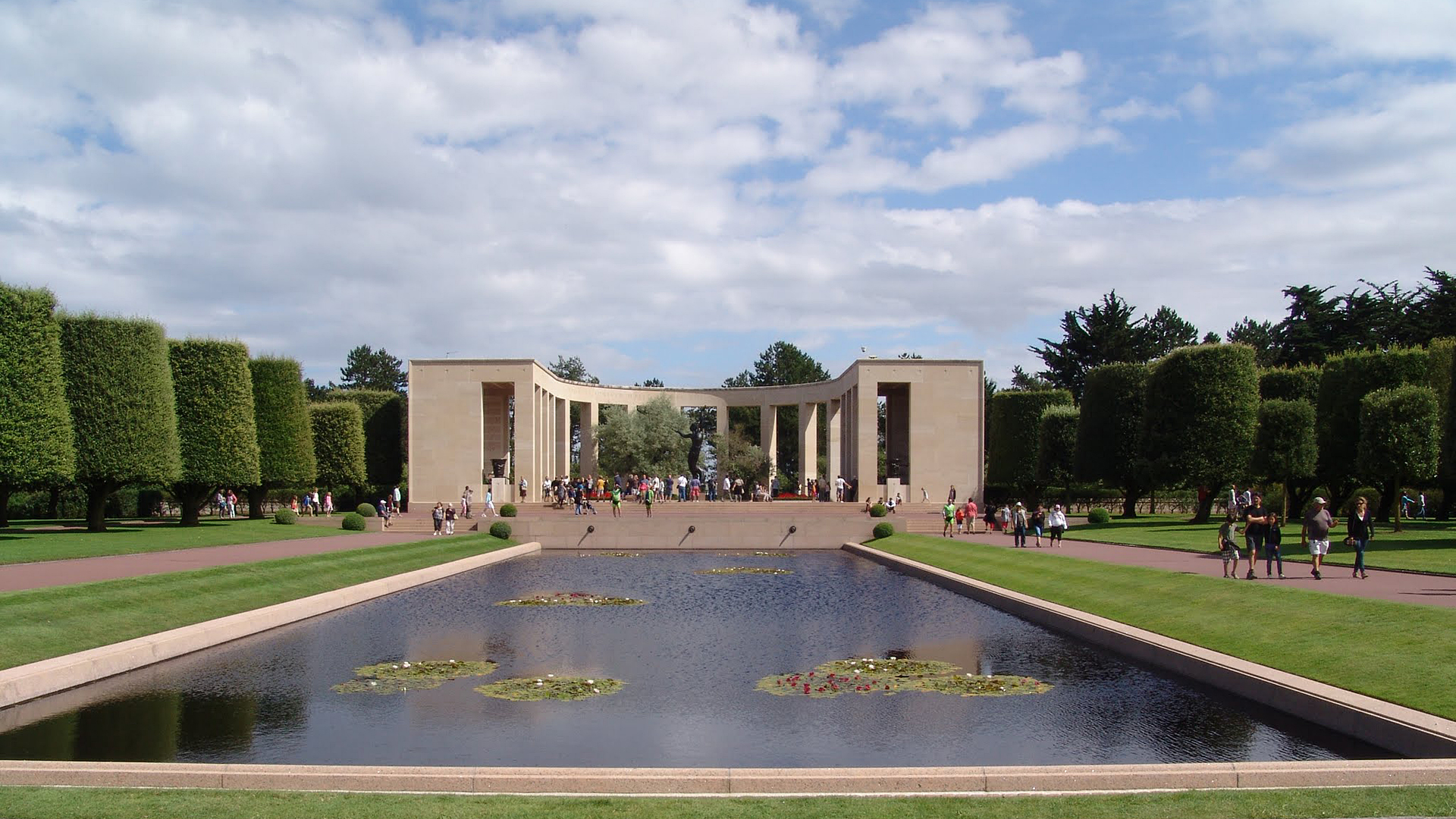
| 
|
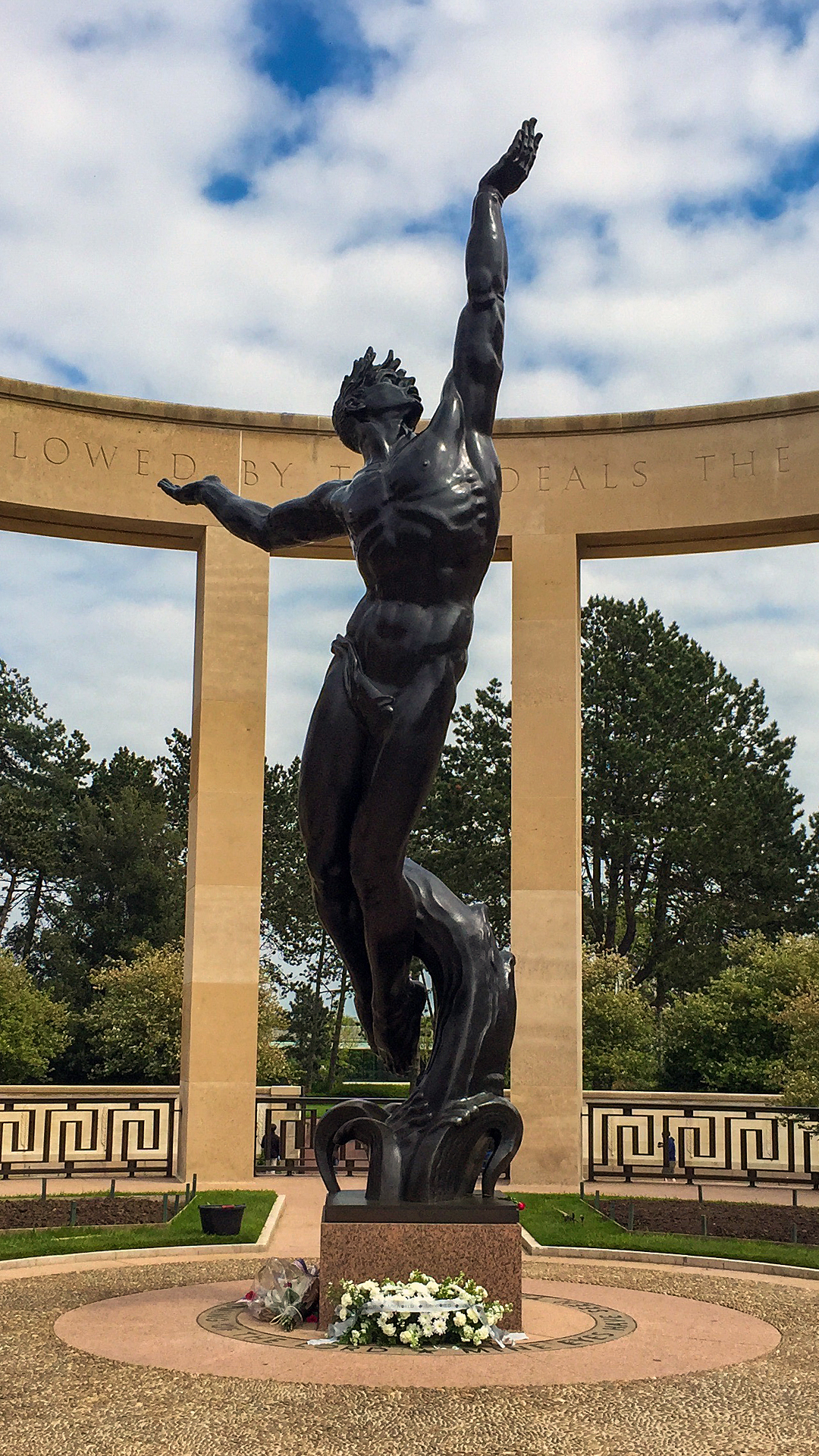
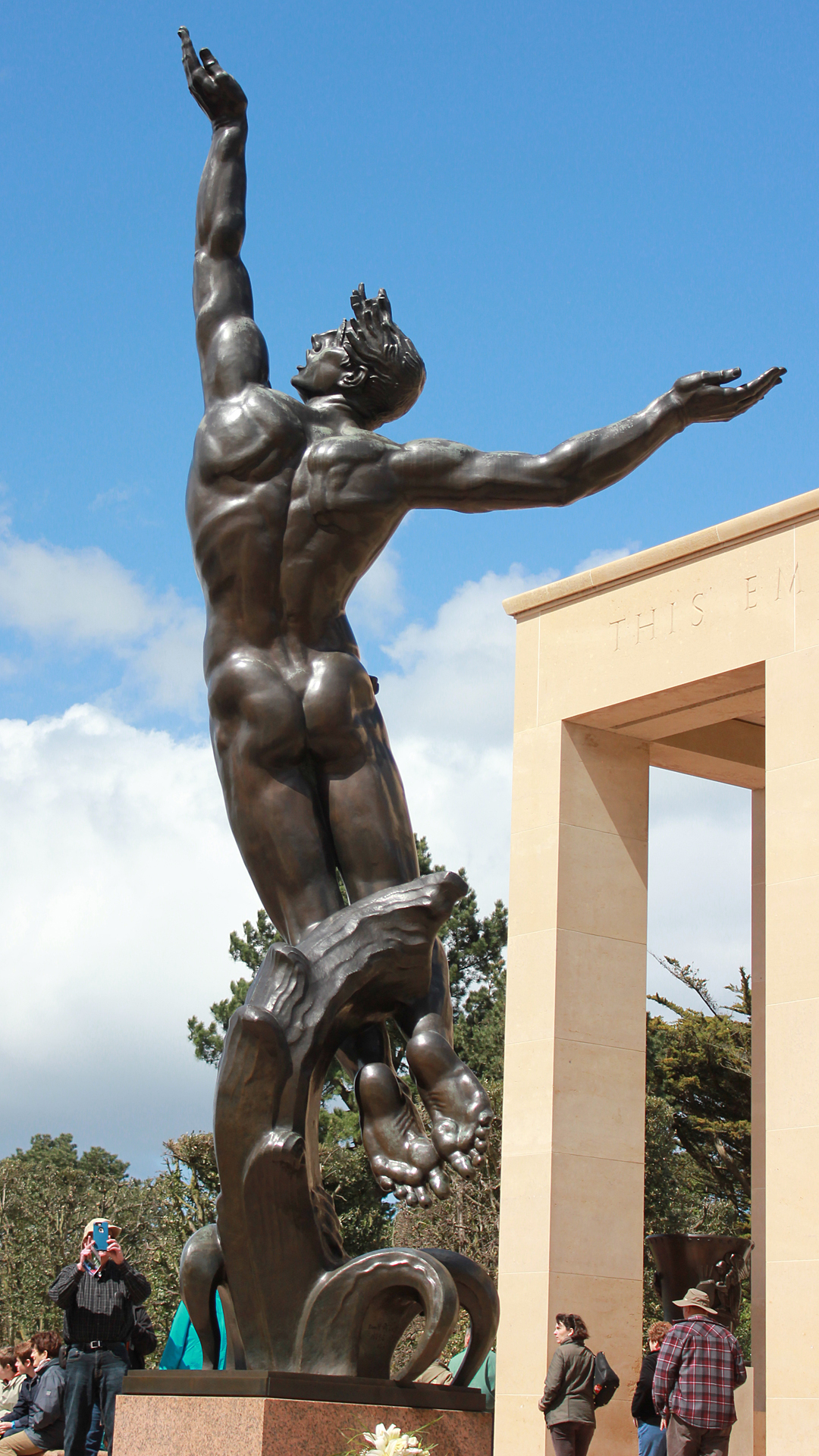 |
| 22-foot bronze statue entitled The Spirit of American Youth Rising from the Waves |
 |
| 1557 Names Inscribed on the Walls of a Semicircular Garden |
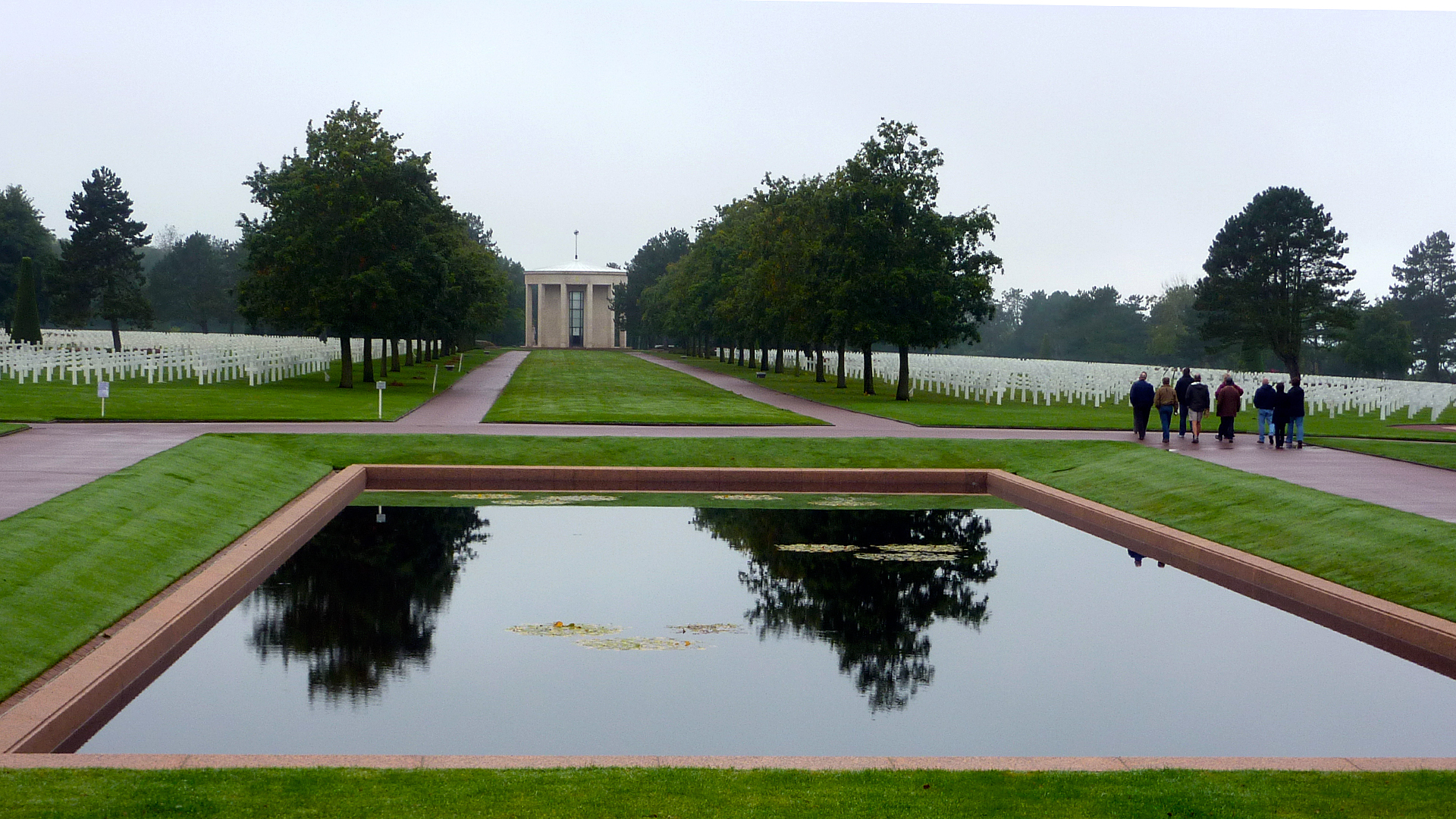 |
| Reflecting Pool |
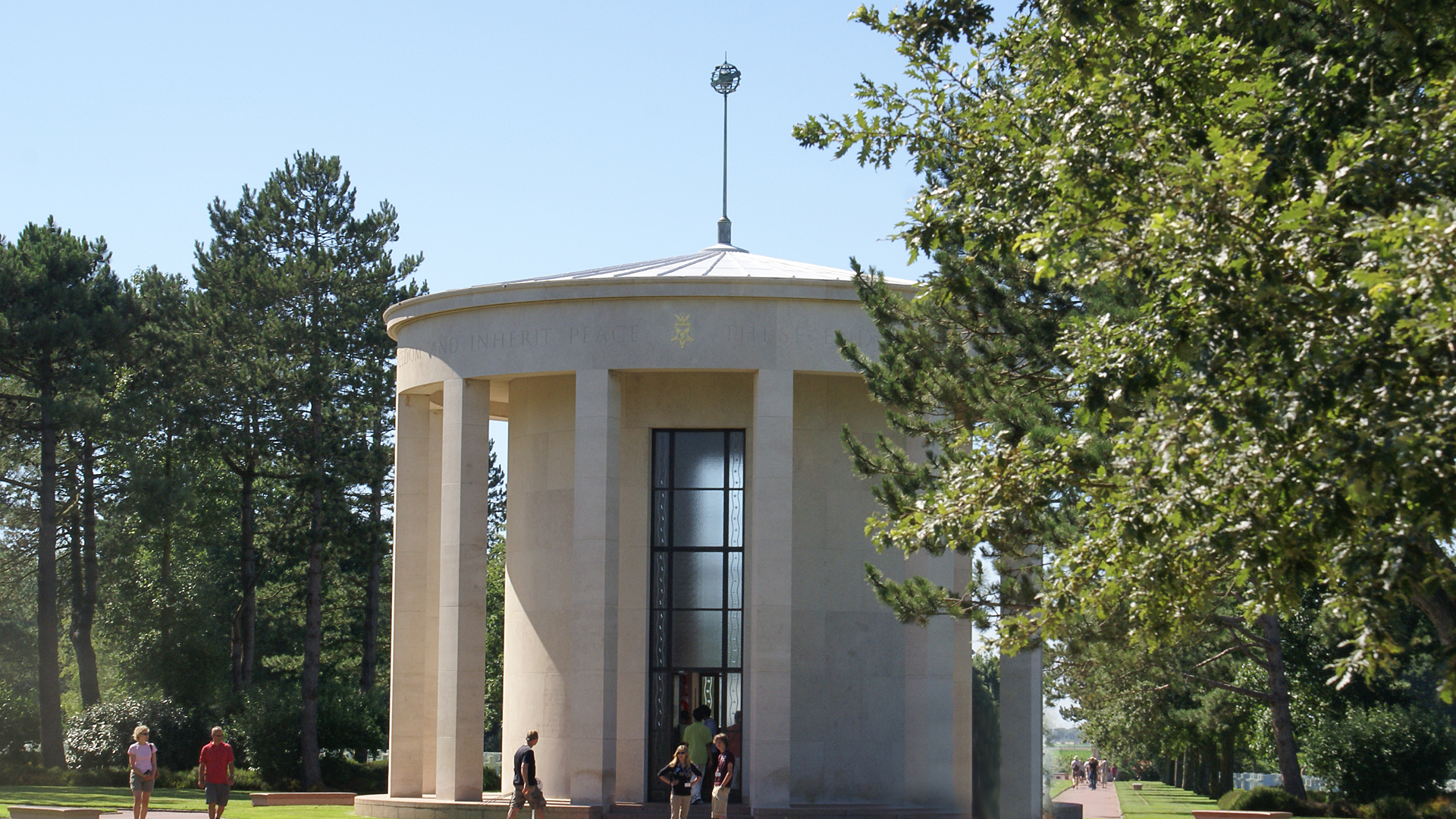
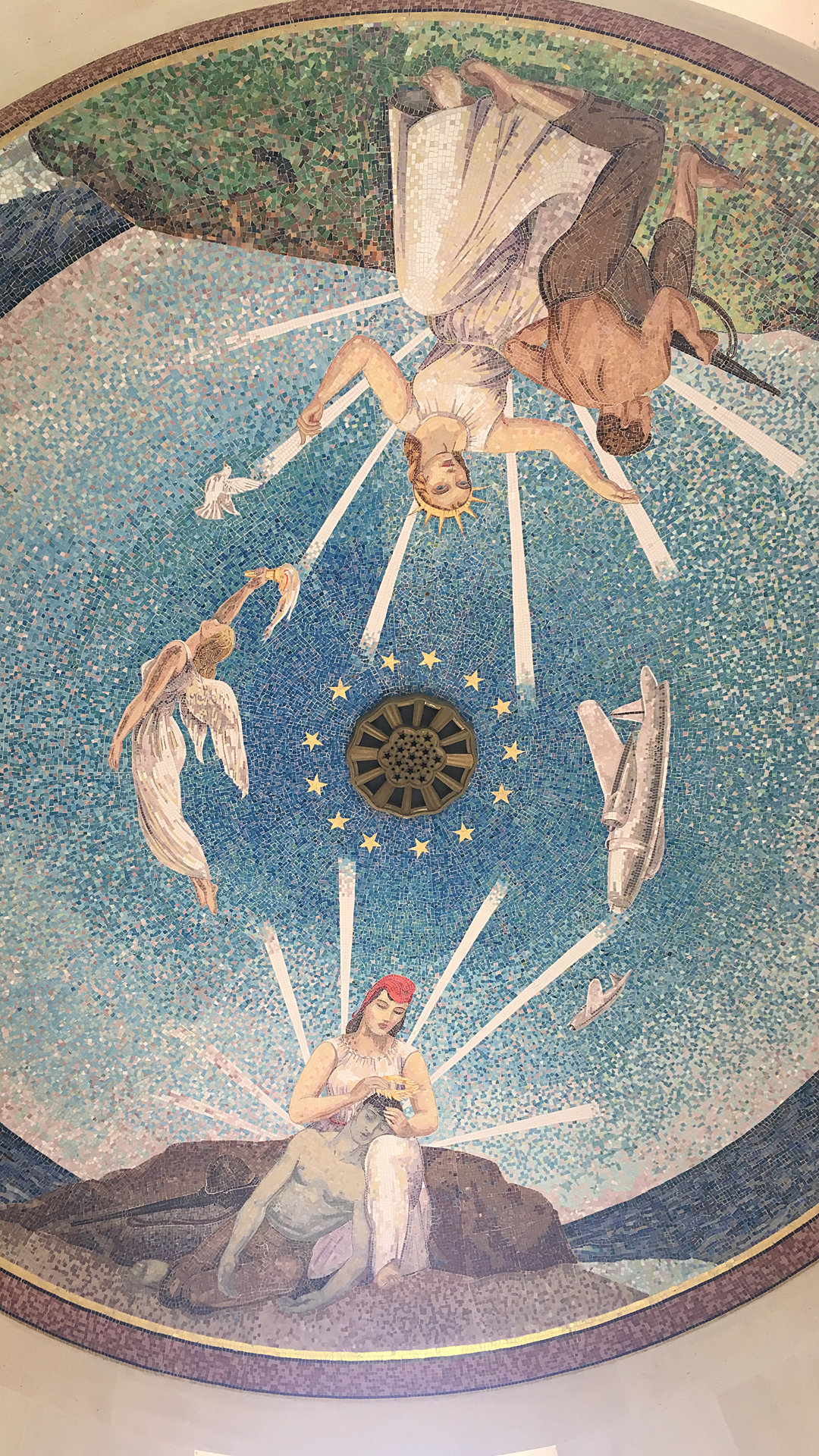
|
| Memorial Chapel |
